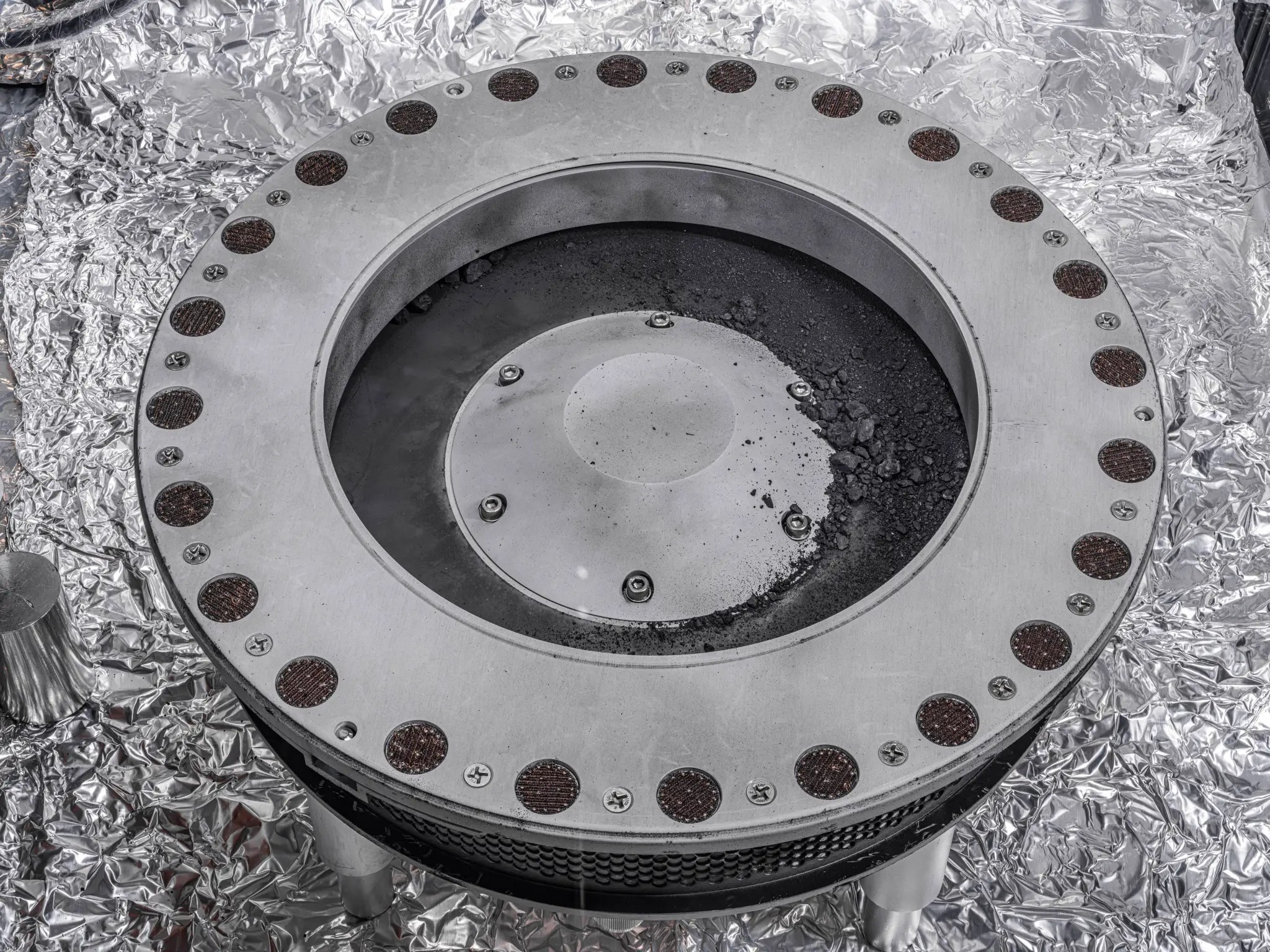September of 2023 was an exciting month for space exploration when OSIRIS-REx finally returned to Earth, dropping off the samples it had collected from the potentially hazardous asteroid Bennu. Now, NASA’s first asteroid Bennu analysis has finally been completed, giving us a glimpse into the iconic asteroid (via LiveScience).
Bennu has already surprised scientists a number of times throughout OSIRIS-REx’s journey. Not only did the spacecraft collect more samples than NASA expected, but it also helped prove that Bennu isn’t actually a solid object, showcasing debris and various pieces of rock and planetesimals exploding when the spacecraft made contact.
Since NASA received the asteroid samples, Bennu has kept scientists scratching their heads of the asteroid samples. Now, with NASA’s first Bennu analysis complete, we’re finally starting to paint a more colorful picture. For starters, the sample team found bright-white particles in the sample, something it originally considered a possible contaminant. However, closer looks have revealed the particles are magnesium phosphate.

This particular mineral isn’t found very well on Earth, as it is too fragile to survive the fall to Earth or because it vanishes soon after. Because of its existence in Bennu, NASA believes that it could help us understand the different geological activities that Bennu witnessed.
There’s also a widespread amount of glycine, one of the simplest amino acids and a vital ingredient for proteins. NASA says there are also high levels of other water-bearing minerals, such as olivine, magnetite, carbonates, and sulfites. The results of this first Bennu analysis, NASA says, show that the asteroid has likely experienced multiple water-related episodes before it coalesced into the mess of debris we know today.
Among the rest of the sample’s offerings, NASA technicians discovered water-altered compounds called phyllosilicates. There was also a vast collection of other hydrated and organic minerals. All of this suggests that Bennu has experienced quite a lot throughout its lifetime and that our theories that structurally bound water in meteorites could have helped deliver the building blocks of life to Earth early in its life.
Of course, NASA says that we’re still very early into the work that the asteroid Bennu has to offer scientists. Further analysis of the samples will hopefully reveal more about the asteroid and what it has witnessed throughout its long journey.








